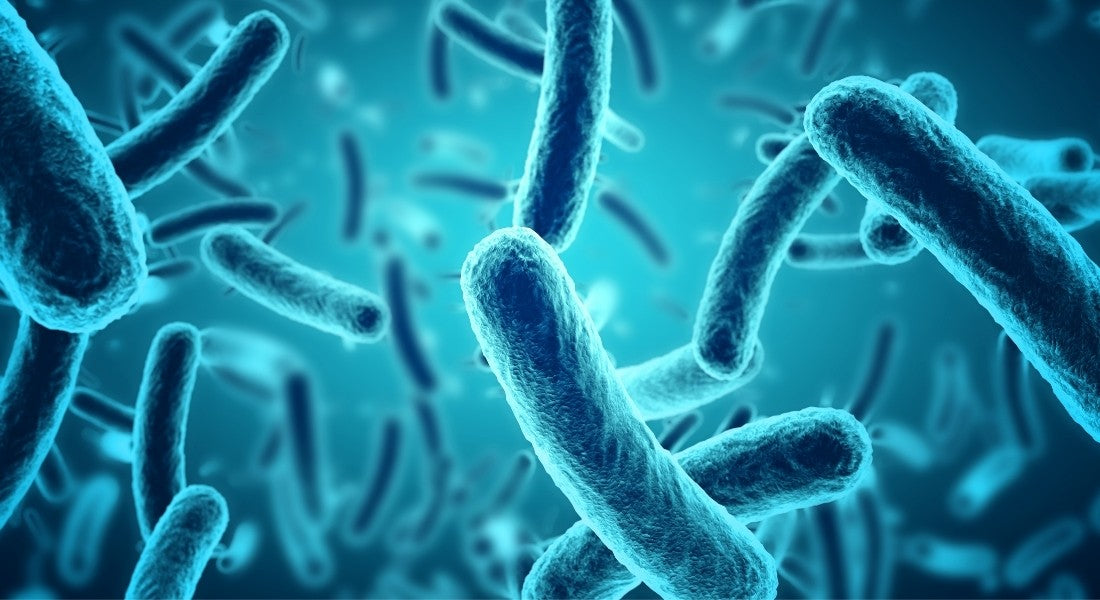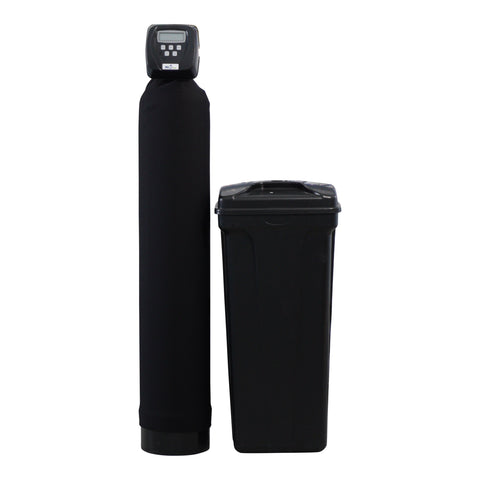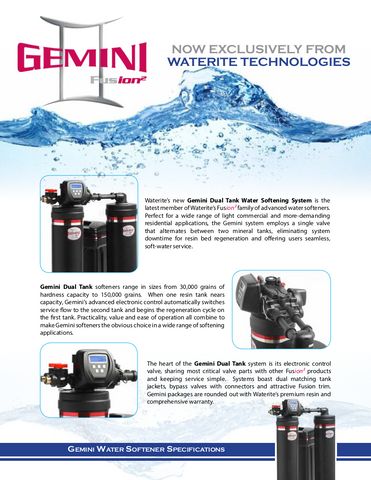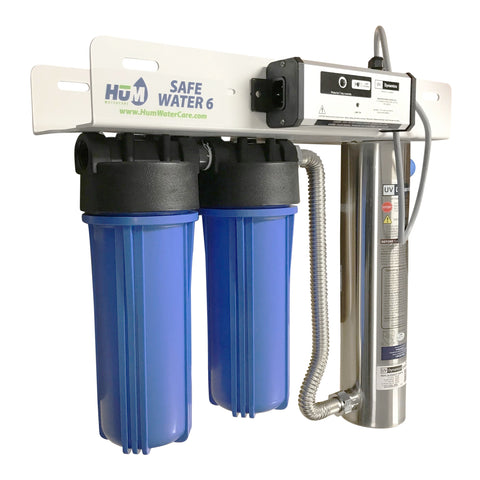
I am often asked about the correct procedure to disinfect a well. Bacteria in your
well water can cause multiple physical symptoms, from fever to cramps to nausea and diarrhea. That is why it is important to test your well water at least once a year to make sure that it remains clean and bacteria free.
If you do find yourself with higher-than-acceptable levels of bacteria in your well water, chlorinating - or shocking – your well with bleach is a safe and effective way to help get rid of coliform or E.coli bacteria from your well water.
If, of course, it is done properly.
But you do not want to just dump a bucket of bleach into the well and hope for the best. There is a process to follow to make sure that you are providing enough bleach power to kill bacteria without harming the other parts of your home’s water system.
Keep in mind that well water chlorination can be highly effective for eliminating a single case of bacterial contamination, however it will not treat the underlying cause of the contamination. If you have an ongoing contamination problem - which can be caused by the well location, well construction, or lack of proper well maintenance - disinfecting the well with chlorine will only fix the problem temporarily.
If this is a process you need to repeat on a regular basis, it is important to identify the underlying cause of the contamination and make sure that it is corrected.
However, for those who need to tackle a one-time disinfecting of their well, this is a quite simple DIY process that most homeowners can tackle.
Video Transcript
Gary The Water Guy:
Hi, I'm Gary The Water Guy, and I own The Water Filter Estore and The Water Store in Midland, Ontario. I'm often asked about the correct procedure on how to disinfect a well. You'd want to disinfect a well, if you've got bacteria in the well, that being a coliform, E.coli, or something like that. And this procedure will take care of both of those. So the first thing, you need to get your supplies ready. You're going to need to locate the wellhead because you're going to be using that. But you're also going to need a bucket. You're going to need some bleach, you're going to need some rubber gloves, and some chlorine test strips. You're also going to need a hose hooked up to an outside hose bib. Because you're going to be using that for mixing the chlorine bleach into the well.
Gary The Water Guy:
And now the first step you need to do is go inside the house and you need to bypass the water softener. You need to bypass any back washable filters that you have like, an iron filter, a sulfur filter, sediment filter, anything like that needs to be bypassed and any cartridge filters that you have need to be removed from their housings. So remove all those, but the ultraviolet light, it stays on as usual. So the next step is you're going to want to remove these bolts so you can remove the cap from the wellhead. Now you have to be careful. There's an electrical connection here. So you remove the bolts and set it aside very carefully.
Gary The Water Guy:
So the next step is you're going to mix the bleach with the water. So of course the obvious question is how much bleach. So for a well casings for drilled wells, for example, that have a six inch casing, you'd use 280 milliliters of bleach for every 50 feet of water. For dug wells that have 36 inch casings, you'd want to use one liter for every five feet of water. If you have no idea how much to use, a good default would be to use about two liters of bleach. Okay. So then what you want to do is have about three gallons of water in a bucket, and then you're going to mix the premeasured amount of bleach with that water so it dilutes it.
Gary The Water Guy:
Then the next step is once you've removed the well cap and you've mixed the bleach in the water, you're going to pour it right down into the well. So the next step is you're going to take the hose and connect it to the outside hose bib. And you're going to run the water back inside the well and what that's going to do, that's going to circulate the water and the chlorine of course, throughout the whole system. And that's going to make sure it's thoroughly mixed. So let that run for at least a minute, even a couple of minutes would be great. And so once you've done that, you can shut off the hose going to the top of the well, and you'd go inside the house and you'd open up a faucet.
Gary The Water Guy:
Now try to pick the cold water faucet that's furthest away from where the water comes into the house, where the pressure tank is. So run the water there until you smell chlorine bleach. If you have trouble smelling it, I always suggest using these chlorine test strips, much more secure way. And to be honest, after a while, you can't even smell the chlorine anymore. So get the test strips. Works much better. So once you've detected bleach at one of those faucets, then start working your way back.
Gary The Water Guy:
You want to flush the toilet. You want to run some water in the shower. At each one of those places, make sure you test it with the chlorine test strips. And again, you're doing only the cold water first. So work your way from the furthest point away from the pressure tank, back to the pressure tank area. So once you've done all that, then you're going to come back here. You're going to put some more chlorine down the well, the same amount you did originally, and you're going to mix it again. And now you're going to do the hot water. Again, starting from the furthest point and working your way back through the system.
Gary The Water Guy:
Once you finish doing the hot water, then you're going to come back here and you're going to take the hose and again, with the open well cap, you're going to run the water down and you're going to wash off the inside walls of the well casing itself. Once you've washed all that off, then you're going to shut off the hose. And you're going to let it sit. It should sit for at least four hours, but it's always ideal if it sits overnight. Once it sat overnight, then what you want to do is hook up the hose and run the water onto a driveway or anywhere like that, patio, anything like that, but not onto your grass because it would kill the grass. Because you got to remember this water still has a lot of chlorine into it. So let her run, but don't be surprised if you see the water coming out quite discolored, especially if you have iron in your water. That's very normal.
Gary The Water Guy:
Next, be sure you do a load of laundry or something like that, but with no clothes in the laundry. Because remember you got the chlorinated water all throughout the whole house. So you want to make sure you get rid of everywhere, including going into the washing machine. So run a load without any clothes in it, just to make sure it's 100% gone before you actually do some laundry in the system. And then you're going to want to go back and make sure you put all the water treatment equipment off bypass back into service.
Gary The Water Guy:
And you're going to want to make sure those filter cartridges you remove, to put new filter cartridges back in. Of course the ultraviolet light is still on. And so you flushed everything out. The ultraviolet light is killing any bacteria that's coming into the system at this point. And so then what you're going to want to do is wait five to seven days until you have the water tested because you want to make sure that you've removed all the bacteria from the water, you've killed it all. And now the water safe for your family.
Gary The Water Guy:
If after that time, you still get a positive bacteria test, then it's time to look at some kind of ongoing method of killing the bacteria. Ultraviolet light is quite common. There's a few other methods, but contact a water treatment professional like myself, and they could help you with that. And that's it. If you liked what you saw today, please click the subscribe button. That way you'll be notified about any new videos as they become available on our channel. You can also check out the existing videos. There's tons of information there. Go to Garythewaterguy.com. If you'd like some more information about our products and services, you can go to the waterfilterestore.com or the waterstoremidland.com.
And again, I'm Gary The Water Guy from The Water Store in Midland, Ontario. Thanks for watching.
Preparing to Disinfect Your Well with Chlorine Bleach

You will need a package of chlorine test strips, a bucket, rubber gloves, and one 4 litre jug of unscented household bleach. This is usually enough but see chart below to calculate the correct amount for your well.
1) Before you start you will need to make sure you bypass any
water softener,
iron filter, or any other type of back washable
water filter and remove any
UV filter cartridges from an
Ultraviolet Disinfection system as the chlorine will damage these items. Be sure to run water through your UV system (if you have one) and that it always remains on during and after this procedure.
2) Remove the well cap. You can easily remove the bolts to get access to the well head to pour the chlorine in.
3) You are going to want to pre-mix the bleach with about 3 gallons of water to dilute it. Straight bleach poured directly into the well can cause corrosion and harm the well casing, so make sure to dilute the bleach before pouring.
How Much Bleach Do You Need?
|
Drilled Wells with 6” Casings |
Dug Wells with 36” Casings |
|
280 ml of bleach for every 50 ft of water |
1 litre for every 5 ft of water |
If you are unsure about what kind of well you have, a good default is to use about 2 litres of bleach in total.
Always use rubber gloves while working with chlorine bleach and be careful not to spill the bleach or the diluted solution on yourself, your clothing or even the lawn.
Disinfecting Your Well Water

1) Carefully pour the diluted bleach solution into the well.
2) Connect a hose to an outside hose bib and run the water back into the well head for about one to two minutes. This will help circulate the well water and the chlorine through the whole system to make sure you have thoroughly mixed the chlorine with your water.
3) Inside the house, turn on one cold water tap and let it run until you can smell chlorine or use the chlorine test strips to confirm. Aim for a faucet that is the furthest away from the pressure tank where the water comes into the house to make sure the chlorinated water is circulating through the entire house. Once you have detected the bleach solution coming out of the faucet, you can shut the tap off.
4) Repeat step 3 at every cold water tap in the house, one by one working your way back toward the water source, including the bathtub(s) and shower(s), washing machine, as well as flushing any toilets in the house once. Don’t forget the outside taps as well.
8) Go back to the well, mix up another batch of diluted bleach and carefully pour the diluted bleach into the well.
9) Return to the house and this time run all the hot water taps, one by one, and turn off again. By this time (if not sooner) you may find that your nose has lost some sensitivity to the smell of chlorine bleach. This is where the test strips will come in very handy.
10) Return to the well but this time add ½ of the required amount of unscented bleach, once again diluted in 3 gallons of water.
11) Using a garden hose, attached to an outside tap, wash down the inside of the well casing. Caution: Some hoses may not be suitable to drink from as they may contain contaminants such as lead. Make sure you are using a hose that is suitable for drinking water when you are using that hose to put water into your well.
12) Let the system (well and plumbing) sit for at least 4 hours, but it is ideal if it can sit overnight to allow the bleach to work
13) After the allotted amount of time, you will want to use a hose to drain the chlorinated water onto your driveway. Because this water will still have high levels of chlorine, it can damage your lawn or garden, so make sure to run the water out to a paved surface where you don’t have to worry about the effects of the chlorine. You want to continue running it until you can no longer smell chlorine.
Don’t be surprised if you see the water coming out quite discoloured, especially if you have iron in your water. That is very normal.
You may also want to run the washing machine on a clean cycle without clothing. This can help make sure the high levels of chlorine in the water are gone from your washing machine while also cleaning any bacteria that may be inside of your washing machine. Just don’t put clothes in the wash, as the high levels of chlorine could damage your clothes.
14) Put water softener, iron filters etc. off bypass and back into service and replace any other filters removed for this procedure.
Testing Your Water After Chlorination

Test you water 7-10 days after this procedure to see if the bacteria have been removed. If you still get a positive bacteria test, contact a water treatment professional about an on going, continuous disinfection system such an Ultraviolet Light Systems.


















